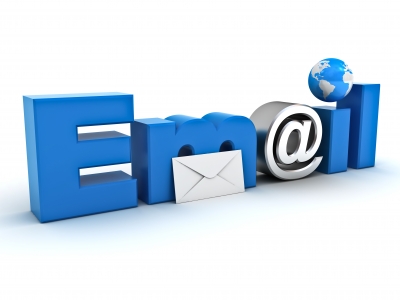Entries from August 2013 ↓
August 30th, 2013 — copywriter, copywriting, copywriting tips
A short while ago I wrote a post on humour in copywriting, debating whether it was a good thing or not.
My conclusion was that if you did want to use humour, you had to use it with caution because not everyone finds the same things funny.
My attention has today been caught by an article in The Drum that states ‘Copywriters will gain inspiration from top Edinburgh Fringe jokes’:
Copywriters seeking inspiration for a good one-liner have hit a rich vein of inspiration at this year’s Edinburgh Fringe Festival, if a top 10 list of the best gags at the Festival is representative.
The annual compilation is this year headed by Rob Auton who dreamed up a sweet one-liner: ‘I heard a rumour that Cadbury is bringing out an oriental chocolate bar. Could be a Chinese Wispa.’
At the other end of the scale was a list of shame featuring groan inducing material such as ‘I thought ex-pats were people who used to be called Pat’.
Compiled by television channel Dave, the list was compiled from 60 shows which presented more than 7,200 gags between them.
These were whittled down to a short list of 30 which were then put to a public vote.
This saw Auton, a former SoHo paintbrush salesman, walk away with 24 per cent of the 2,570 votes cast along with a cash prize.
Commenting on his accolade he said: “I am honoured to receive this award and just pleased that a joke that tackles the serious issue of the invention of a new chocolate bar can be laughed at by the people of Britain.”
The top 10 quips:
1 Rob Auton “I heard a rumour that Cadbury is bringing out an oriental chocolate bar. Could be a Chinese Wispa.”
2 Alex Horne “I used to work in a shoe-recycling shop. It was sole-destroying.”
3 Alfie Moore “I’m in a same-sex marriage… the sex is always the same.”
4 Tim Vine “My friend told me he was going to a fancy dress party as an Italian island. I said to him ‘Don’t be Sicily’.”
5 Gary Delaney “I can give you the cause of anaphylactic shock in a nutshell.”
6 Phil Wang “The Pope is a lot like Doctor Who. He never dies, just keeps being replaced by white men.”
7 Marcus Brigstocke “You know you are fat when you hug a child and it gets lost.”
8 Liam Williams “The universe implodes. No matter.”
9 Bobby Mair “I was adopted at birth and have never met my mum. That makes it very difficult to enjoy any lapdance.”
10 Chris Coltrane “The good thing about lending someone your time machine is that you basically get it back immediately.”
Not entirely convinced I’ll be trying any of those out in my copy.
Over to you
If you’re a copywriter, or write copy for your business, what are your views on using humour?
Are you ever tempted to slip a gag or two into your content? If you have, what reaction did you get?
Leave your comments below.
August 28th, 2013 — marketing
Why you must have your content written by a professional copywriter
The internet has opened up the world.
Today it’s possible to sell to virtually any country you care to mention. But are your marketing materials up to it?
Think about this for a second. If you’re a foreign company wanting to do business in the UK, how do you go about it?
More often than not the answer seems to be to get a cheap translation of your website copy, brochures, reports etc., and charge headlong into the marketplace.
That may well be your cheapest option, but it is one of the worst you can take.
The importance of country specific marketing materials
For starters you’re looking to break into a new market, which means the needs and wants of potential customers may well be different.
Then there are the cultural differences that have to be taken into consideration –after all, what worked in your native country won’t necessarily work in the UK.
What about the standard of English in your marketing communications? Straight translations rarely work and what about the nuances of language?
Putting something out that doesn’t take into account the culture of the country you are selling to will make you a laughing stock.
You’ll be seen as a company that really doesn’t care about its image.
Your materials simply won’t work.
If you’re serious about making the right kind of impact in new markets it’s essential you:
- Research your marketplace and find out what they need and why
- Get your website content re-written professionally to make sure it resonates with your readers
- Get a native copywriter to work on your brochures and reports to ensure they make sense, are culturally specific and use the correct language
- Work with your copywriter to develop the right tone, voice and personality of your materials so they fit perfectly with your brand
Yes, all of that adds up to quite a hefty investment, but it will also give you the best possible chance of cracking your new market.
Never underestimate the power of professional copywriting – it doesn’t come cheap, but do you really want your company to be viewed as being ‘cheap’ because it cuts corners in one of the most fundamental areas of business?
August 26th, 2013 — copywriter, copywriting, Copywriting briefs, copywriting tips
Copywriting isn’t just about writing – it’s about using the right words, to address the right people, using the right language. 
Anyone can string a sentence together, but not everyone can create something so compelling you just have to buy, sign up or download a report.
It’s not enough for your copywriter just to hear that you want a 6-page brochure with 300 words on each page to cover your company history, products, location etc.
Any copywriter worth their salt will also ask you:
Who is your audience?
Before a finger touches the keyboard, they need to know whom they are writing for.
Without that information how can they begin to develop the right message?
Are they male or female?
How old are they?
Are they affluent or on lower incomes?
What are their aspirations?
Why are they coming to you? What is the problem they have that they want solved?
What is your product/service?
They don’t need to know how many colours it comes in, but rather what is its main benefit?
What problem does it solve?
What benefits does it offer?
How will it improve their quality of life?
What would stop people from buying it?
What is its USP?
What is your brand voice?
The next step is to take a look at your company.
Do you already have an established brand?
Do you have a guide as to the language/tone you want to use?
How do you want to be perceived by your customers?
Do you want to come across friendly, approachable, corporate, professional etc?
Are there any words/terms you dislike?
These questions are just the tip of the iceberg because it’s essential your copywriter comes away with an in depth knowledge of you, your business, your customers and your products.
You see, copywriting isn’t just about writing, its about emotion, engagement and persuasion.
Author: Sally Ormond, Copywriter and MD at Briar Copywriting Ltd. Follow her on Twitter and Google+
August 23rd, 2013 — Customer service, twitter
Can Twitter really help your customer service? 
Many are still sceptical about that, but it really can.
The world is far more social these days and consumers love the instant connection that social media gives them. Now, rather than emailing and waiting for a response, they can send a tweet or Facebook message for a faster response. But of course, that only works if you are monitoring those channels effectively.
After looking into the role of social media in customer service, I stumbled upon a post on Social Media Examiner. In it they talk about 4 examples of excellent Twitter customer service.
Follow the link below and have a read and grab some quick takeaways that will help you improve your customer service and how your customers perceive your business on Twitter.
4 Examples of Excellent Twitter Customer Service.
August 21st, 2013 — email marketing
Normally, when writing about email marketing, I’m usually harping on about content. But this post is more interested with design.
 If your email design is flawed, it could lead to a flood of unsubscribers and you don’t want that.
If your email design is flawed, it could lead to a flood of unsubscribers and you don’t want that.
Here are the top 3 mistakes and how to avoid them.
1. Difficult to read
It’s worth bearing in mind that many people will be reading your email on their smartphone or tablet, so it’s wise to increase your font size – about 14 is ideal.
Talking of fonts, a simple one is best (not a script font) and try to stick with the same one throughout your email. If you do want to add a bit of variety, stick to one for your headlines and a second one for your body text.
The idea of your emails is to spread news about your brand and, to that end, your emails must be recognisable. That means sticking to the same layout and font for consistency.
Colours are also important. When it comes to text, make sure you use either black or dark grey on a white background, as it’s by far the easiest to read. If you want to use brighter colours, keep those for your call to action. Oh, and whatever you do, avoid patterned backgrounds, they’re very off-putting.
2. Confusing images
Images can be great in emails, but only if they are relevant, simple and fun. Make sure the image you use has an obvious link to what you’ve written about. There’s nothing worse than a confused audience.
3. Inconsistency
The key is for your recipients to instantly recognise your email so they open it and read it. If you constantly change style and colours they may not realise that it came from you and unsubscribe.
To that end, it’s essential the voice you use, template and colour scheme remain the same. Plus the other elements of your email, such as contact details, should stay in the same place so they become familiar.
None of this is rocket science, or ground-breakingly new, but nonetheless they are important points. Consistency is essential in any form of marketing if you want people to recognise and engage with your brand.









